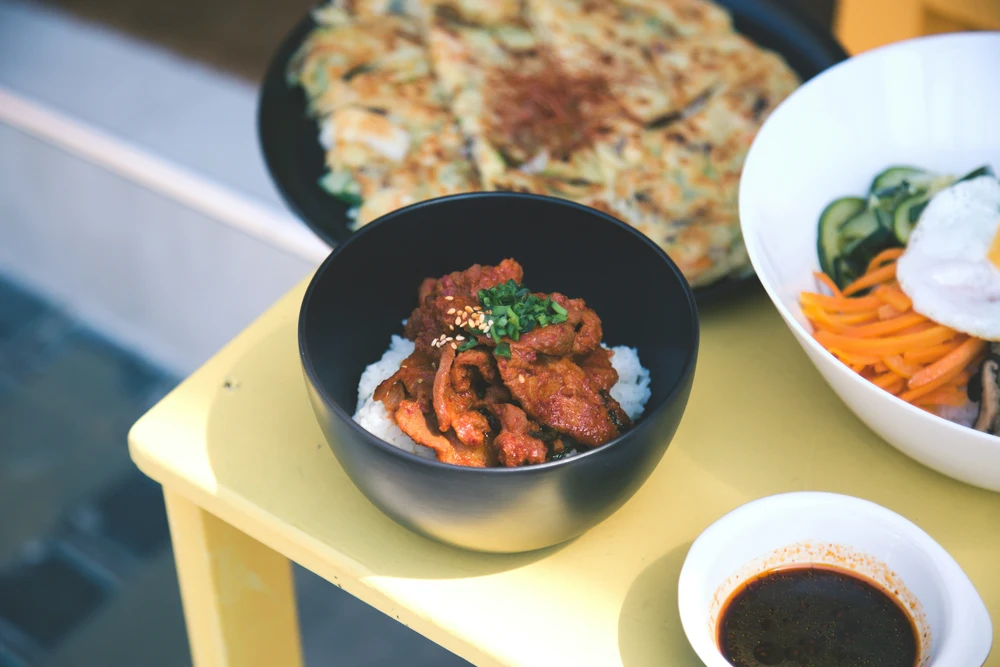The basic yet legendary beef brisket has earned its place at the center of countless get-togethers. Learning how to make this delicious reduction can elevate any meal, whether it’s an outside BBQ or a family holiday feast.
Although baking beef brisket may seem intimidating, if you follow the right methods and guidelines, you’ll become the family’s and friends’ go-to expert on brisket.
Imagine tender, smokey morsels melting in your tongue. That’s what’s in store for you as we continue on this culinary journey together.
We will guide you through every step, from choosing the perfect cut to mastering the art of cooking without making mistakes. Get ready to master the art of baking a beef brisket for dinner!
Selecting the ideal brisket cut
It’s critical to comprehend the two main portions when selecting the ideal brisket. Each of the flat and factor cuts has distinct characteristics that impact both texture and flavor.
Since the flat cut is thinner, it’s a popular choice for those who choose to consume significantly less fat. It cuts well, making it ideal for sandwiches and platters.
Conversely, the point cut shows more marbling. When cooked properly, this approach produces a deeper flavor and softness. This method is perfect for creating succulent charred ends or for shredding.
Select a bouquet that has the right amount of marbling. A higher fat content ensures juiciness during cooking. Also, remember weight; larger portions feed more human beings, but would possibly require longer cooking times.
Making the right choice puts you on the path to a memorable dinner centered around your perfectly cooked beef straight out of the oven!
Brisket preparation and seasoning
Brisket preparation is an essential step that lays the groundwork for flavorful results. Begin by cutting off any excess fat from the beef. Remove any difficult or thick parts, leaving approximately a quarter-inch of fat cap for flavor.
Seasoning comes next. A simple mixture of onion powder, garlic powder, and salt & pepper works great. Apply this mixture liberally across the bridge, rubbing it into all the nooks and crannies.
Consider marinating your brisket for one day in a mixture of your preferred spices or even beer for added depth—this helps to tenderize and impart flavor.
Remember to let it rest at room temperature for about one hour prior to cooking. This encourages even cooking throughout and allows the meat’s fibers to relax.
Now that you have everything set up, you can properly begin learning how to make red pork brisket!
How to Cook a Beef Brisket
You can add more to your dish using a variety of approaches while cooking beef brisket. Each offers unique textures and sensations.
Oven roasting slowly is a well-known craving. It ensures softness and develops a rich flavor profile by enabling even warming dispersion.
On the other hand, smoking gives the meat rich, smoky undertones that complement its inherent flavor. Persistence is necessary for this strategy, but the result is a memorable dinner.
Cooking under pressure can be a game-changer for those who are short on time. It quickly tenderizes beef without compromising too much flavor.
Braising combines both wet and dry warming methods. Instead of finishing the brisket in liquid, start by searing it on the stovetop; this method consistently produces juicy results.
Choice of strategy depends on desired results and time available!
A Step-by-Step Guide to Brisket Cooking in the Oven
To begin, preheat your oven to 300°F, or 150°C. Using a low-slow cooking method is crucial for creating succulent brisket.
Place your professional brisket fat side up in a sizable roasting pan and preheat the oven. As the meat cooks, the fats will baste it, keeping it moist.
Tightly cover the pan with aluminum foil. This retains steam, ensuring that there is some cooking.
Cook each pound for about three to four hours. Cook a 5-pound breast for a minimum of 15 to 20 hours. To determine primary tenderness, use a meat thermometer and set the internal temperature between 195 and 205°F (90 and 96°C).
Once it reaches the desired temperature, remove the foil and let it rest at room temperature for a minimum of 30 minutes before slicing.
This not only enhances flavor and moisture retention, but also ensures a more even distribution of the meat’s juices.
How to Cook a Brisket to Perfection: Tips and Techniques
Persistence is essential for a nicely cooked breast. Slow cooking enhances the tenderness and flavor of the beef. Don’t rush the process.
Use a meat thermometer to determine the desired doneness. A temperature of 195°F to 205°F is the ideal range for most beneficial tenderness. This series guarantees a beautiful breakdown of collagen.
It’s crucial to let your brisket rest after cooking. Before reducing, cover it with foil and let it sit for at least half an hour. This aids in redistributing the beef’s liquids, giving it a juicy bite.
Try enhancing taste profiles by experimenting with unique marinades or spice mixtures. A simple mixture of paprika, garlic powder, salt, and pepper works great, but feel free to get creative!
When cooking, think about using a water pan in your oven. In addition to adding steam to the air, it retains moisture levels, which makes it ideal for giving food that desired soft-to-the-touch quality.
Ideas for Serving and Recipes Using Leftover Brisket
Brisket leftovers are a treasure waiting to be transformed into delicious new recipes. To begin, shred your beef into delicious taco pieces. Top it with a generous amount of diced onions, sparkling cilantro, and lime juice.
Arrange slices with mustard and pickles on crusty toast for a substantial sandwich. For an extra treat, add some cheese. Some ideas include melted provolone or sharp cheddar.
You could even try making chili with the leftovers. The dish’s richness is enhanced by the way the rich flavors blend together perfectly while simmering.
Try your hand at preparing beef fried rice if you’re feeling daring. Combine leftover meat with vegetables, such as bell peppers and peas, and add soy sauce at the end for a taste of Asia.
Don’t skip breakfast! Stir diced beef into omelets or scrambled eggs for a hearty breakfast. Every mouthful will transport you back to the ultimate oven-cooked experience while also offering something exciting and novel.
Troubleshooting Typical Errors
Although it can be a satisfying experience, cooking pig brisket is not without its challenging circumstances. Overcooking the meat is one frequent error. The texture that results is rough and dry. Keep a close eye on your cooking time at all times to avoid this.
Under-seasoning is another issue. The rich flavor of brisket calls for intense spice. Don’t scrimp on salt or your preferred rubs to bring out the flavor’s inherent qualities.
Occasionally, people forget to let the brisket rest once cooking has finished. Resting allows the meat’s liquids to redistribute at a specific location, making every chew moist and tasty.
You may have cut too close to the grain if you find that your slices are chewy. Always pause before slicing for subtle effects to observe the path taken by the muscle fibers.
Don’t undervalue homemade glazes or sauces; they can transform an ordinary brisket into something magnificent!
In Summary
Learning how to cook beef brisket in the oven will improve your cooking abilities and wow your family and friends. Every step is crucial to achieving the desired soft, tasty outcome, from choosing the perfect cut to perfectly seasoning it.
You’ll be all set to make a succulent brisket that melts in your mouth if you adhere to our specific instructions and cooking procedures manual.
Don’t forget to follow the advice and tips in this newsletter; they are crucial for getting past typical obstacles encountered when cooking.
Remember about those delicious leftover options as well tacos or brisket sandwiches might be just as filling as the main event! With practice, perseverance, and a passion for delicious food, you may become an expert in the kitchen at creating oven-cooked brisket that has everyone asking for seconds. Have fun playing with tastes and methods until you find what suits you best!
Have fun in the kitchen!



0 thoughts on “Mastering Beef Brisket: The Ultimate Guide to Perfect Oven-Cooked Brisket”